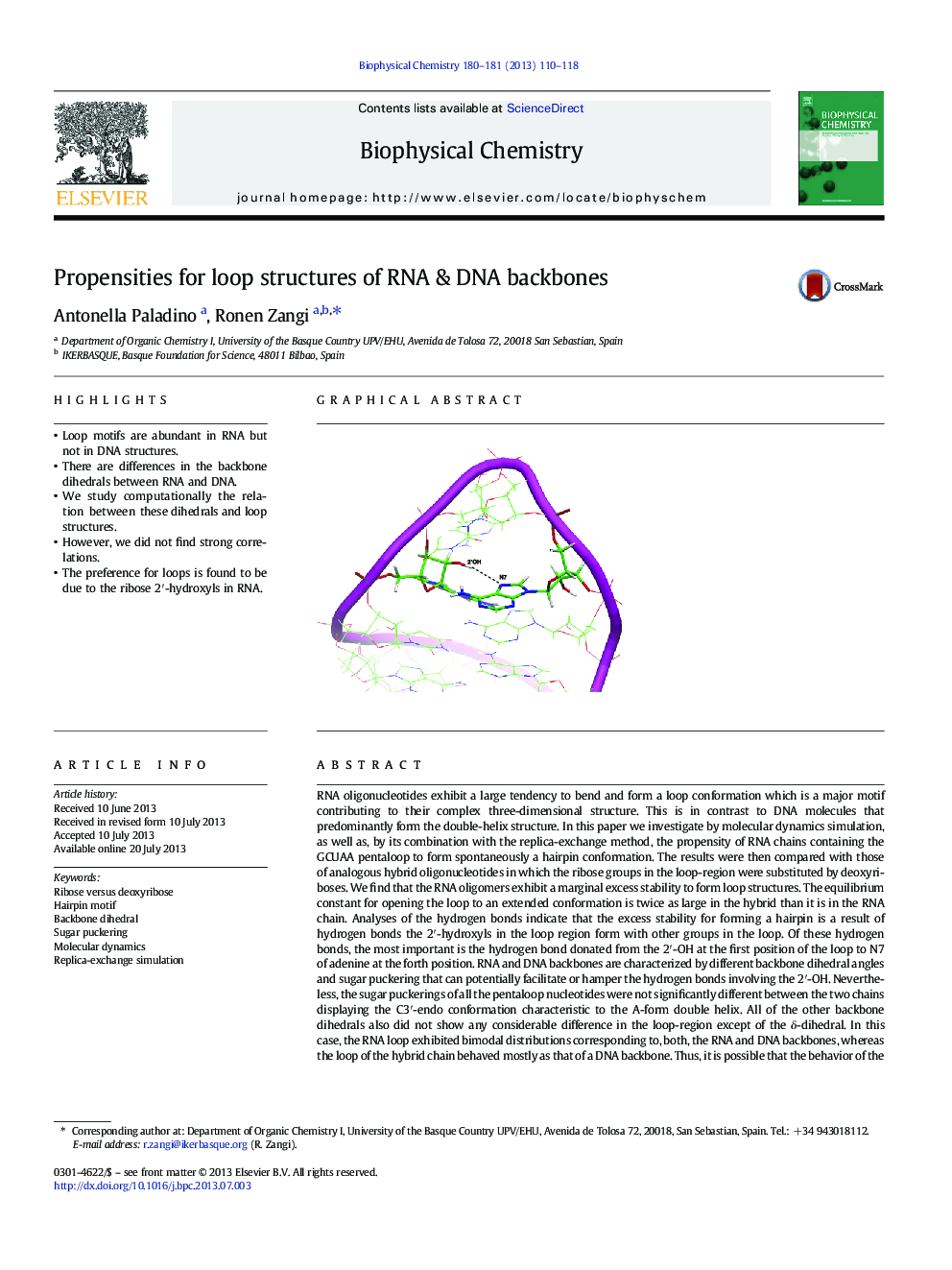| Article ID | Journal | Published Year | Pages | File Type |
|---|---|---|---|---|
| 5371093 | Biophysical Chemistry | 2013 | 9 Pages |
â¢Loop motifs are abundant in RNA but not in DNA structures.â¢There are differences in the backbone dihedrals between RNA and DNA.â¢We study computationally the relation between these dihedrals and loop structures.â¢However, we did not find strong correlations.â¢The preference for loops is found to be due to the ribose 2â²-hydroxyls in RNA.
RNA oligonucleotides exhibit a large tendency to bend and form a loop conformation which is a major motif contributing to their complex three-dimensional structure. This is in contrast to DNA molecules that predominantly form the double-helix structure. In this paper we investigate by molecular dynamics simulation, as well as, by its combination with the replica-exchange method, the propensity of RNA chains containing the GCUAA pentaloop to form spontaneously a hairpin conformation. The results were then compared with those of analogous hybrid oligonucleotides in which the ribose groups in the loop-region were substituted by deoxyriboses. We find that the RNA oligomers exhibit a marginal excess stability to form loop structures. The equilibrium constant for opening the loop to an extended conformation is twice as large in the hybrid than it is in the RNA chain. Analyses of the hydrogen bonds indicate that the excess stability for forming a hairpin is a result of hydrogen bonds the 2â²-hydroxyls in the loop region form with other groups in the loop. Of these hydrogen bonds, the most important is the hydrogen bond donated from the 2â²-OH at the first position of the loop to N7 of adenine at the forth position. RNA and DNA backbones are characterized by different backbone dihedral angles and sugar puckering that can potentially facilitate or hamper the hydrogen bonds involving the 2â²-OH. Nevertheless, the sugar puckerings of all the pentaloop nucleotides were not significantly different between the two chains displaying the C3â²-endo conformation characteristic to the A-form double helix. All of the other backbone dihedrals also did not show any considerable difference in the loop-region except of the δ-dihedral. In this case, the RNA loop exhibited bimodal distributions corresponding to, both, the RNA and DNA backbones, whereas the loop of the hybrid chain behaved mostly as that of a DNA backbone. Thus, it is possible that the behavior of the δ-dihedrals in the loop-region of the RNA adopts conformations that facilitate the intra-nucleotide hydrogen bondings of the 2â²-hydroxyls, and consequently renders loop structures in RNA more stable.
Graphical abstractDownload full-size image
